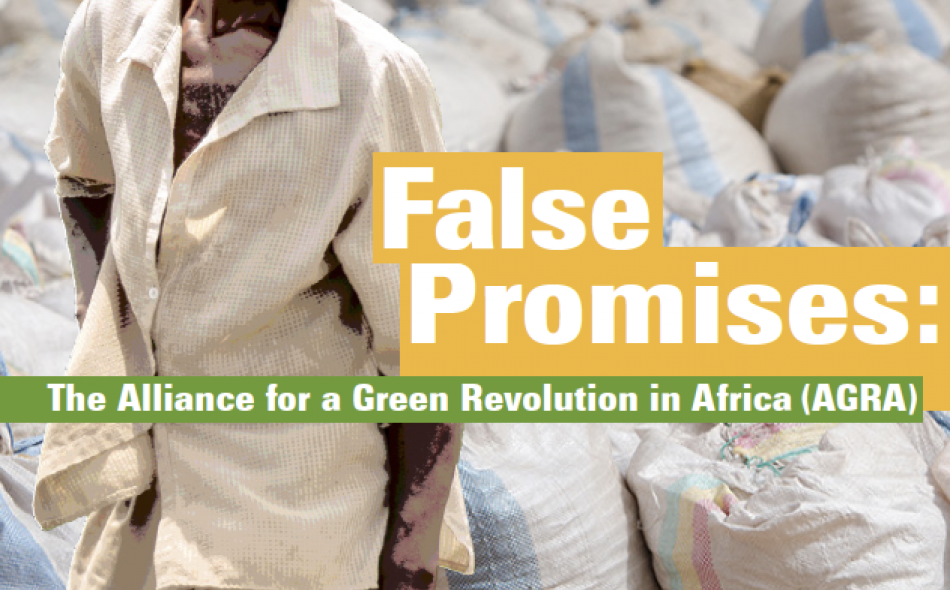Failing Africa’s Farmers: An Impact Assessment of the Alliance for a Green Revolution in Africa.
GLOBAL DEVELOPMENT AND ENVIRONMENT INSTITUTE WORKING PAPER NO. 20-01July 2020. 38 pages.
The report is based on a study by Tufts University researchers, who say AGRA declined requests to provide internal monitoring and outcomes evaluation data. Instead, researchers used country-level production, yield and land data to assess whether AGRA programs had significantly raised agricultural productivity.
AGRA's 2017-2021 strategy states it will "contribute" to doubling the yields and incomes of 30 million smallholder households—nine million directly and 21 million indirectly.
We found no evidence that productivity, incomes or food security were increasing significantly for smallholder households. (Failing Africa’s farmers: New report shows Africa’s Green Revolution is “failing on its own terms”).
Specifically, we found:
- Little evidence AGRA was reaching a significant number of farmers. Its last progress report says only that AGRA had trained 5.3 million farmers in modern practices with “1.86 million farmers using” such practices. This is vague and far short of the stated goal of doubling productivity and incomes for seven million farmers directly and another 21 million indirectly.
- No evidence of significant increases in smallholder incomes or food security. For AGRA countries as a whole, there has been a 30% increase in the number of people suffering extreme hunger since AGRA began, a condition affecting 130 million people in AGRA countries. Kenya, home to AGRA’s headquarters, saw an increase in the share of its people suffering undernourishment in the AGRA years.
- No evidence of large productivity increases. For staple crops as a whole, yields are up only 18% over 12 years for AGRA’s 13 countries. Even maize, heavily promoted by Green Revolution programs, showed just 29% yield growth, well short of AGRA’s goal of doubling productivity, which would be a 100% increase.
- Where technology adoption has taken place, input subsidies provided by African governments seem far more influential than AGRA’s programs. It is difficult to find evidence that AGRA’s programs would have any significant impacts in the absence of such large subsidies from African governments.
- Even where production increased, as in Zambia, a near-tripling of maize production did not result in reductions in rural poverty or hunger. Small-scale farmers were not benefiting; poverty and hunger remained staggeringly high with 78% of rural Zambians in extreme poverty.
- Green Revolution incentives for priority crops such as maize drove land into maize and out of more nutritious and climate-resilient traditional crops such as millet and sorghum, eroding food security and nutrition for poor farmers. Millet production declined 24% with yields falling 21% in the AGRA years.
- No signs of “sustainable intensification,” the goal of sustainably increasing production on existing farmland. Environmental impacts are negative, including acidification of soils under monoculture cultivation with fossil-fuel-based fertilizers. Production increases have come more from farmers bringing new land under cultivation — “extensification” — than from productivity increases. Both trends have implications for climate change mitigation and adaptation.
Related:
Watch a recording of a webinar hosted by HOMEF in collaboration with AFJN on August 6, 2020 on which Timothy A. Wise discusses his research and the report.

No comments:
Post a Comment